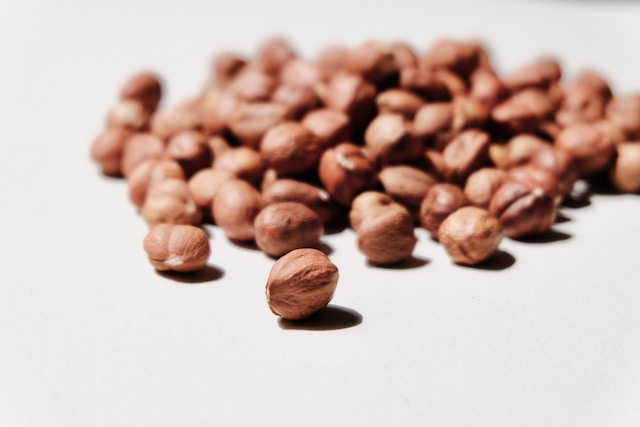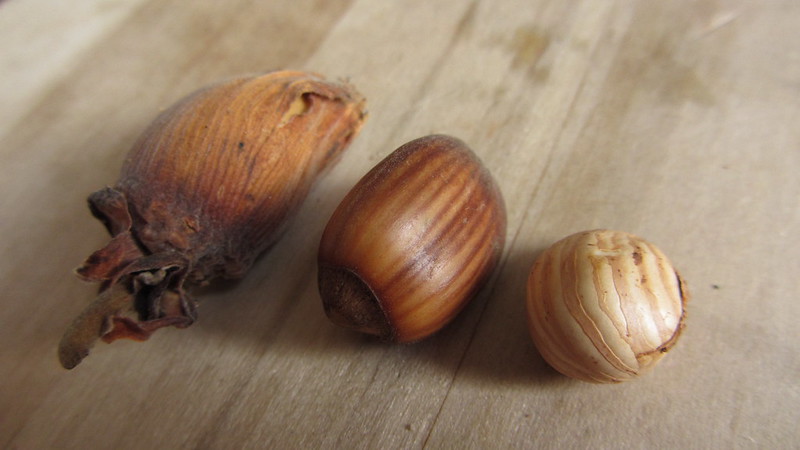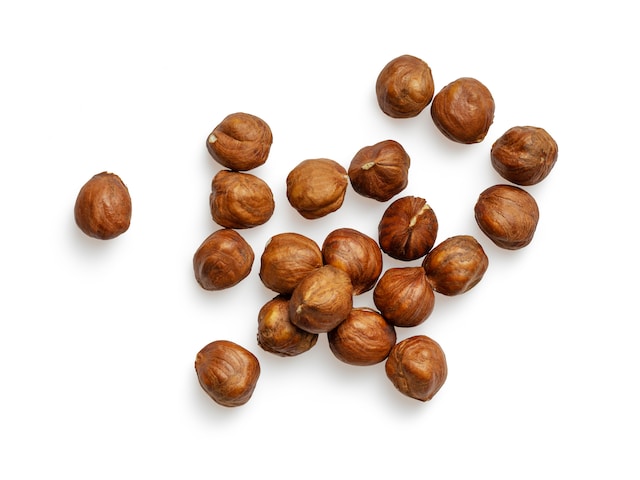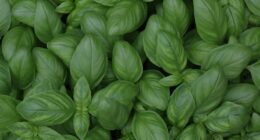It’s clear that while hazelnuts and cobnuts may look similar, they have distinct differences in terms of taste, texture, and nutritional value. Hazelnuts are sweeter and oilier with a more delicate flavor compared to the earthy richness of cobnuts. Cobnuts also tend to be larger than hazelnuts.
What are hazelnuts?
(Photo by Jocelyn Morales on Unsplash )

Hazelnuts, also known as filberts, are a type of nut that comes from the hazel tree. They have a hard outer shell and a small kernel inside that is rich in flavor. Hazelnuts are commonly used in baking and cooking due to their unique taste and versatility.
One of the most popular uses for hazelnuts is in chocolate spreads like Nutella. The sweet, nutty flavor of hazelnuts pairs perfectly with chocolate, making it an irresistible combination.
Hazelnuts are also high in healthy fats, fiber, and antioxidants. These nutrients make them great for heart health and protecting against chronic diseases like cancer.
You can enjoy hazelnuts on their own as a snack or use them in recipes like salads, roasted vegetables or even homemade granola bars! With so many ways to incorporate this delicious nut into your diet, there’s no reason not to add some hazelnut goodness to your meals today!
What are cobnuts?
(Photo By Victoria Reay on Flickr)

Cobnuts are a type of nut that is often confused with hazelnuts due to their similar appearance. They come from the common hazel tree, but they have some distinct differences in taste and texture.
Unlike regular hazelnuts, cobnuts are harvested while they are still green and unripe. This gives them a slightly different flavor profile than fully matured nuts, with a more delicate taste and less bitterness.
The shells of cobnuts are also thinner than those of regular hazelnuts, which makes them easier to crack open by hand. Once you get inside the shell, you’ll find a creamy white kernel that has a smooth texture and buttery flavor.
Cobnuts originate from Kent in England where they’ve been grown for centuries. Today there is still an annual cobnut festival held in Kent each year celebrating this delicious nut!
In recent years, cobnuts have gained popularity as a gourmet ingredient in restaurants and bakeries around the world. From savory dishes like salads and roasted meats to sweet treats like cakes and chocolates, these versatile nuts can add depth of flavor to any dish!
Hazelnuts Vs. Cobnuts – Key differences
Although hazelnuts and cobnuts may look similar, they have a few key differences. Firstly, the husk of a cobnut is softer than that of a hazelnut, making it easier to crack open. Secondly, cobnuts tend to be larger in size compared to hazelnuts.
Another major difference between these two nuts lies in their taste. Hazelnuts are sweet and crunchy with a distinct nutty flavor. Cobnuts, on the other hand, have a slightly milder taste and are less sweet.
When it comes to cooking and baking, both nuts can be used interchangeably in most recipes. However, due to their different tastes and textures, certain dishes may benefit from using one nut over the other.
While hazelnuts can be found throughout Europe and North America as well as parts of Asia and Africa; cobnuts are mainly grown in England’s Kentish orchards.
Understanding these key differences between hazelnuts and cobnuts can help you choose the right nut for your recipe or snack preferences!
The nutritional value of hazelnuts
Hazelnuts are packed with essential nutrients that make them a healthy addition to any diet. One ounce of hazelnuts contains approximately 176 calories, 4 grams of protein, and 17 grams of fat, including heart-healthy monounsaturated and polyunsaturated fats.
These little nuts are also an excellent source of dietary fiber, providing around 3 grams per serving. Fiber is crucial for maintaining digestive health and can help lower cholesterol levels in the body.
In addition to fiber, hazelnuts contain several important vitamins and minerals such as vitamin E, magnesium, phosphorus, potassium, copper, and manganese. Vitamin E is a potent antioxidant that helps protect cells from damage caused by free radicals.
Magnesium plays a vital role in many bodily functions such as regulating muscle and nerve function while phosphorus supports strong bones and teeth.
Hazelnuts also contain plant compounds known as flavonoids which have been shown to possess anti-inflammatory properties that may benefit heart health by reducing blood pressure levels.
Hazelnuts offer an array of impressive health benefits making them a deliciously nutritious snack or ingredient in your favorite recipes.
The nutritional value of cobnuts
Cobnuts, also known as filberts, are a type of nut that is commonly found in Europe and some parts of Asia. They have a hard outer shell that encases the kernel inside. Cobnuts are packed with nutrients that offer various health benefits.
One of the primary nutritional benefits of cobnuts is their high content of healthy fats, such as monounsaturated and polyunsaturated fats. These types of fats can help to reduce inflammation in the body and lower cholesterol levels.
In addition to healthy fats, cobnuts are also an excellent source of protein, fiber, vitamins B and E, iron, magnesium, zinc, and potassium. These nutrients play essential roles in maintaining overall health by supporting various bodily functions such as energy production and immune system function.
The high vitamin E content found in cobnuts makes them an ideal snack for promoting skin health. Vitamin E is known for its antioxidant properties which help to protect against damage caused by harmful free radicals.
Incorporating cobnuts into your diet can be a great way to boost your nutrient intake while enjoying a delicious snack. Whether you choose to eat them raw or roasted or use them as an ingredient in recipes like salads or baked goods – there’s no denying that these nuts pack a punch when it comes to nutrition!
Recipes with hazelnuts and cobnuts
If you’re a fan of nuts, then you’ll love incorporating hazelnuts and cobnuts into your recipes. These two types of nuts are versatile in the kitchen and can be used in both sweet and savory dishes.
For a simple yet delicious snack, try roasting hazelnuts with some sea salt for an easy on-the-go treat. You can also add chopped hazelnuts to your morning oatmeal or yogurt for a crunchy texture.
Cobnuts make a great addition to salads, adding a nutty flavor and crunch. They also pair well with cheese plates or charcuterie boards as a tasty snack option.
When it comes to baking, both hazelnuts and cobnuts work well in cakes, cookies, and breads. Try making homemade Nutella using roasted hazelnuts blended with cocoa powder and sugar for an indulgent spread.
For something savory, use chopped cobnuts as a topping for roasted vegetables or mix them into stuffing for added texture and flavor.
The possibilities are endless when it comes to cooking with these delicious nuts!
Where do cob nuts come from?
Cobnuts, also known as filberts in some regions, are a type of nut that grow on trees. These nuts have been cultivated for centuries and have origins tracing back to ancient Rome and Greece. However, they were largely forgotten until the 19th century when they began experiencing a revival in England.
Today, cobnuts are mostly grown in the UK with Kent being one of the major producers. In fact, Kent is often referred to as “The Garden of England” due to its rich agricultural history including cobnut cultivation.
The process of cultivating cobnuts involves planting trees which can take several years before bearing fruit. Once matured however, these trees produce an abundance of nuts which are harvested around September and October each year.
While cobnuts may be a lesser-known nut compared to almonds or hazelnuts, their unique taste and texture make them popular among those who appreciate their distinct flavor profile. Whether eaten fresh from the tree or used in various recipes such as cakes and pastries, there’s no denying that these little gems pack a flavorful punch!
Featured Image By – Mockup Graphics on Unsplash









